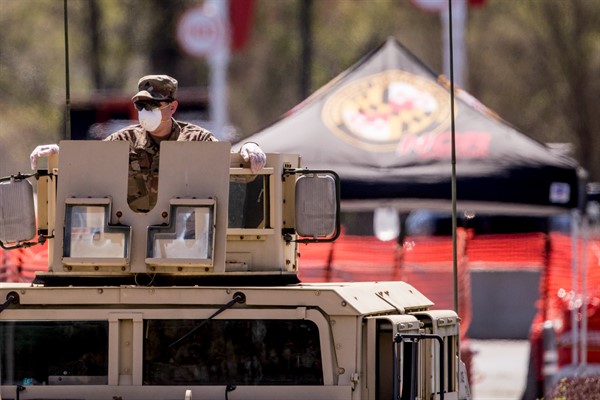The arrival of two U.S. Navy hospital ships to New York and Los Angeles last week provided dramatic images of the changing role of the U.S. military during the coronavirus pandemic. The USNS Comfort and the USNS Mercy usually call on ports in Africa or around the Indian Ocean to provide basic health services to underserved populations. During conflicts, they provide emergency medical care to American troops. This time, the symbolism is quite different, as their intended beneficiaries inhabit the two largest cities in the world’s wealthiest country.
The U.S. military and other armed forces around the world are now mobilized for a very different kind of threat than what they are accustomed to facing—one that can affect the well-being of soldiers, citizens and societies at large. How America’s armed forces meet this challenge will have important ramifications for security cooperation and global efforts to keep the peace and prevent war. It will also test the bonds—military and otherwise—between the United States and its allies, many of which were already under strain before this pandemic.
A first consideration is the health and safety of the armed forces themselves, as they provide auxiliary medical services to the national health system. Whether on ships or in barracks, troops tend to live in close quarters, and are thus at higher risk than the general public. More than 1,400 U.S. service members have been sickened with COVID-19 so far, leaving military leaders with some hard choices.

